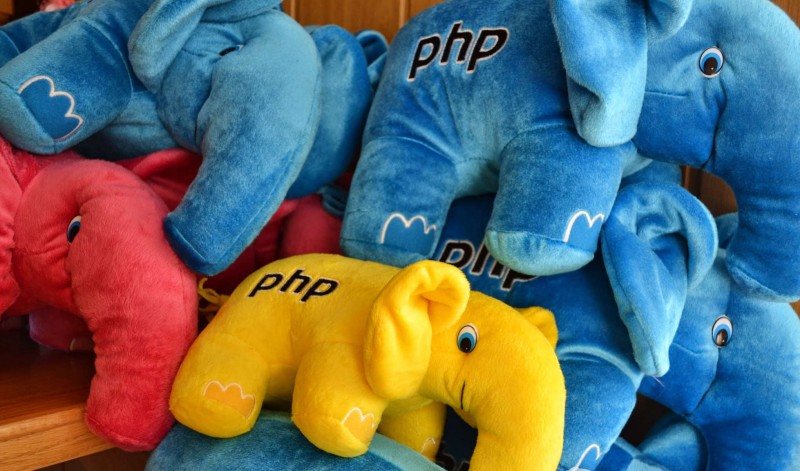
PHP: The Giant ‘elePHPant’
By VAYUZ in PHP
Personal Home Page or PHP, now widely known as PHP: Hypertext Preprocessor is a server-side scripting language created for web development and now, also utilized as a general-purpose programming language. Originally designed by Rasmus Lerdorf in the year ’94, it was initially a series of CGI (Common Gateway Interface) Binaries in C, to maintain his Personal Homepage, which he used to display his resume online and collect data from visiting web users. Later on he added the functions to work with web forms and extended to communicate with databases, terming it as “Personal Home Page/Forms Interpreter” or PHP/FI which could build simple and dynamic web pages. PHP was never intended to be a programming language but after continuous development and that’s how PHP was born. Now, the standard form of PHP is now exclusively produced by The PHP Group, open-source and free of charge.
This server-side scripting language is now the most popular alternative to Microsoft’s ASP, intended to be a gap-filler between Server Side Includes and Perl, it can be combined with HTML code or any other language framework to generate a web page’s HTML code, image or some other data. Also, PHP can be used in standalone Graphical User Interface (GUI) applications and to create dynamic content on web pages which means PHP processes to make changes before the HTML page is even created enabling developers to create applications that could publish blogs, run advanced websites like Wikipedia or Wikibooks or remotely control hardware.
For example, in static web pages, when a user clicks on a hyperlink or enter a URL, requesting a web page, the server where the page is stored reverts back the HTML document to the user’s system and then the web browser displays it as a result. So, the web page will not revert back the information that is not pre-formatted, the user may click on the displayed links or small applications, but other than the already stored automated information, the web page is said to be stationary. With Dynamic web pages on the other hand, the user can make requests on the go and data stored in a database on the server will be constructed live in accordance with what the user requests using a medium such as Active Server Page (ASP), embedded in the HTML code. Now this medium relays the server what information to revert to the web page. This is what makes a web page interactive and dynamic.
But PHP does not just focuses on creating Dynamic web pages. PHP is primarily a processor, interpreting and executing instructions, converting one input stream to another, although most commonly it is in HTML, but it also could be XML, JSON or binary information such as images, audio formats. But since it is free and open-source, PHP allows its users to add functions and customise it according to their own preference. Powered by Zend Engine, over the years, PHP has drawn the development of many different software frameworks. Also, many Web Content Management Systems like Word Press, MediaWiki, Drupal, eZPublish, the front-end of Facebook, and many others have been written in PHP as well. PHP’s popularity as a server-side and general-purpose programming language can be measured by the fact that more than 82% of websites implement PHP as a server-side programming language, according to W3Tech, a web-based technology survey organisation.
Youtube is loaded with lot of videos about PHP, you can start with this one Birth of PHP.

Leave a Comment
You must be logged in to post a comment.